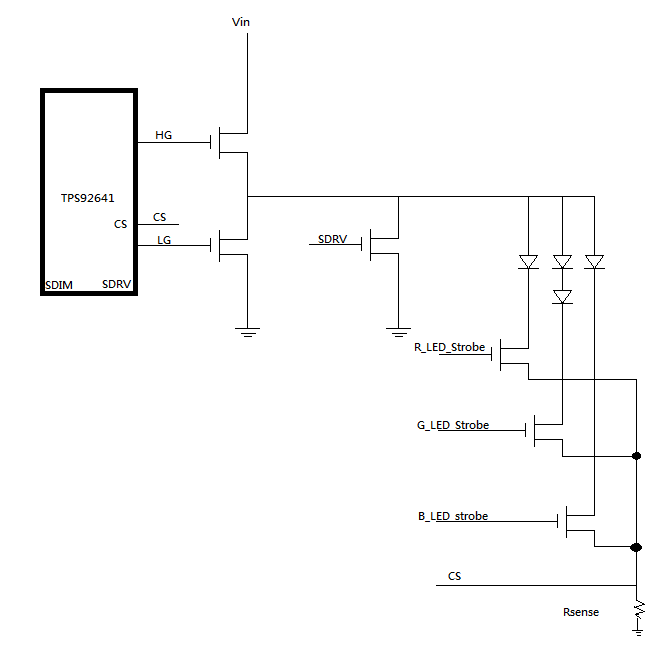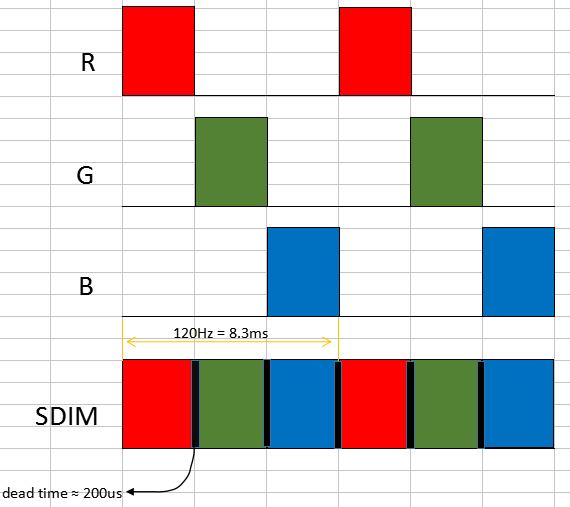Hi team,
Customer would like to consult the application TPS92641 as below schematic.
There will be three connected LED which is controlled by strobe signal with mosfet and the strobe signal will not been overlapped.
- Does the structure make sense for you? Would you have any concern about it?
- Because the Vfb signal is different for different LED, whether there will be a voltage spike since transition?
Thank for your help.



